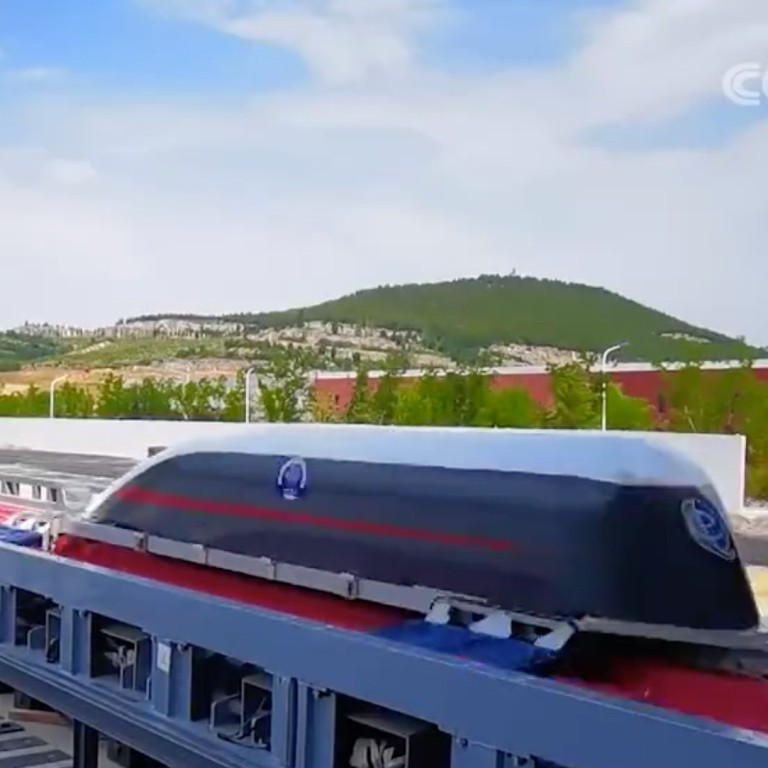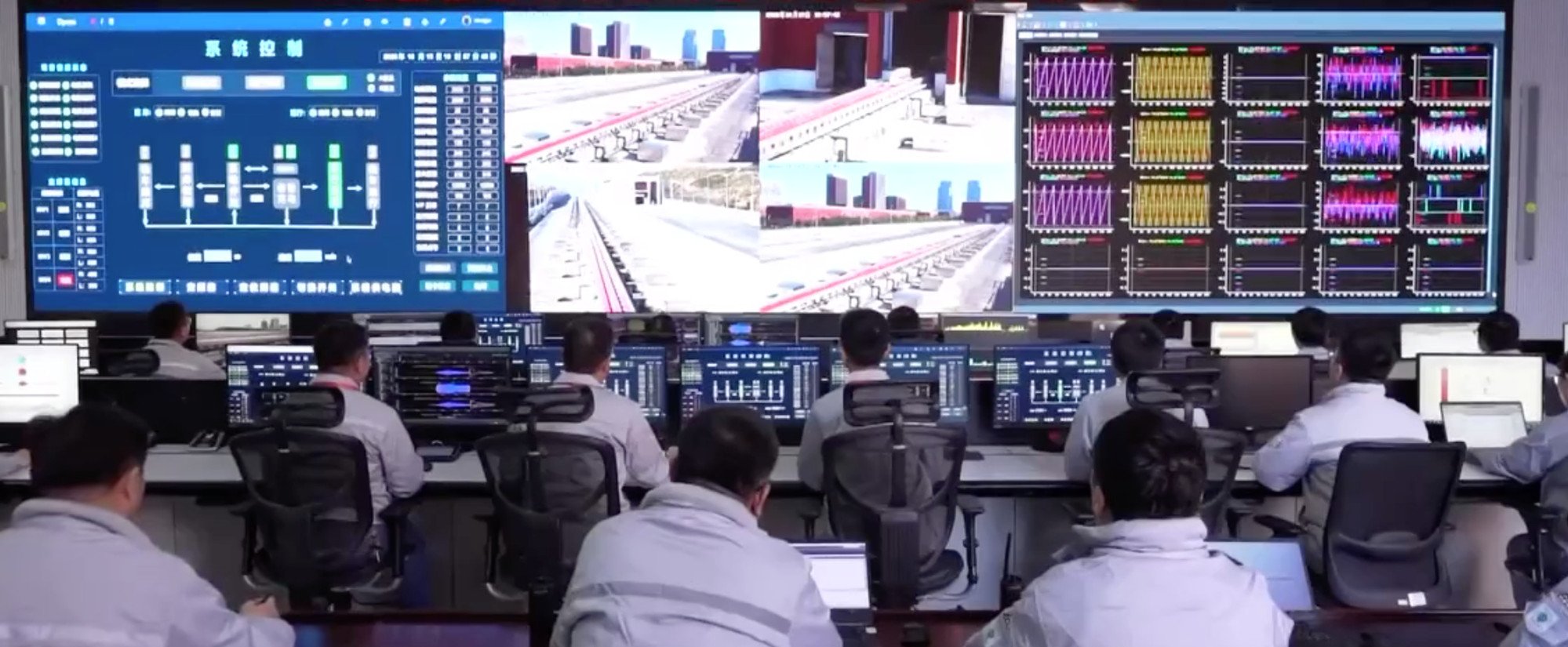
In a hurry? China’s ‘electromagnetic sledge’ cruises at nearly the speed of sound
- World’s most powerful magnetic propulsion system could help scientists solve problems holding back ultra high-speed transport
- Researchers say recent achievements may herald a new age of maglev trains
China has launched the world’s most powerful magnetic propulsion system, capable of accelerating a carriage to 1030km/h (640mph), just under the speed of sound, state media reported on Thursday.
Unlike a previous rocket sledge, the carriage on the electromagnetic sledge does not have to carry fuel, and boasts better response times and controllability.
The advancements that produced the new speed record will boost the development of new transport technology, including trains and planes, according to a report on China Central Television.

The Jinan site is the world’s first ground-based, ultra high-speed test facility using electromagnetic fields, the report said.
The facility’s power supply consists of two main components: coils mounted inside the carriage and a track to provide a strong magnetic field. Once a current is switched on in the coils, the magnetic field generates an electromagnetic force to push the carriage forward.
‘All-round development’ a must as China balances Xi’s high-quality growth goal
Similar mechanisms are used in rail gun weapons where the barrel serves as the track for bullets.
The 3.3 billion yuan (US$456.58 million) project could become an important part of China’s drive to build a fleet of high speed maglev trains.
The scientists previously developed an electronic control system for the world’s first 600km/h maglev transport system in Qingdao, Shandong province. That trial project ended in July 2021.
40 per cent of Chinese chips shipped to Russia are defective, newspaper says
The fastest commercial maglev train still in operation was built by Shanghai Transrapid with German technology and can cruise up to 431km/h. It operates on a 30km track between the city’s airport and a transit hub. According to some experts, China is planning new maglev train routes over longer distances.


